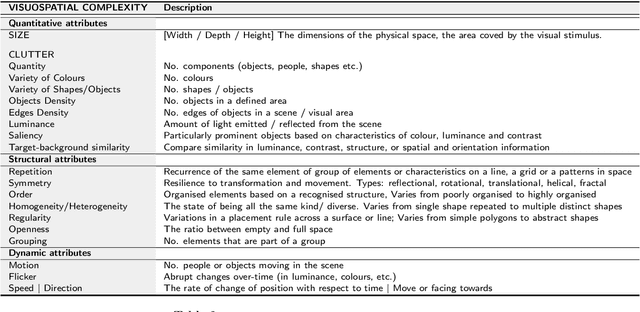Get our free extension to see links to code for papers anywhere online!Free add-on: code for papers everywhere!Free add-on: See code for papers anywhere!
Vasiliki Kondyli
Towards a Human-Centred Cognitive Model of Visuospatial Complexity in Everyday Driving
Jun 02, 2020Figures and Tables:







Abstract:We develop a human-centred, cognitive model of visuospatial complexity in everyday, naturalistic driving conditions. With a focus on visual perception, the model incorporates quantitative, structural, and dynamic attributes identifiable in the chosen context; the human-centred basis of the model lies in its behavioural evaluation with human subjects with respect to psychophysical measures pertaining to embodied visuoauditory attention. We report preliminary steps to apply the developed cognitive model of visuospatial complexity for human-factors guided dataset creation and benchmarking, and for its use as a semantic template for the (explainable) computational analysis of visuospatial complexity.
* 9th European Starting AI Researchers Symposium (STAIRS), at ECAI
2020, the 24th European Conference on Artificial Intelligence (ECAI).,
Santiago de Compostela, Spain
Via
 Add to Chrome
Add to Chrome Add to Firefox
Add to Firefox Add to Edge
Add to Edge